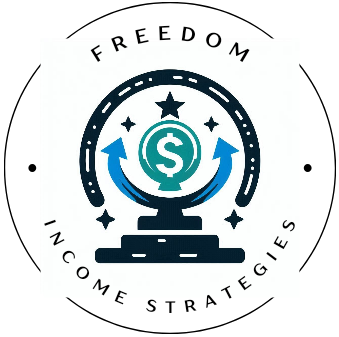If you’ve started your journey into dividend investing, you’ve likely come across a term that keeps popping up: the dividend growth rate. For many investors, especially those focused on long-term income, understanding this concept can be crucial. In this post, we’ll explore what the dividend growth rate is, why it matters, and how you can use it to boost your portfolio’s performance.
What Is the Dividend Growth Rate?
The dividend growth rate (DGR) refers to the annualized percentage increase in a company’s dividend over time. Essentially, it measures how much the company’s dividend payments have grown, typically over the last few years. This metric is essential for investors looking to generate a steady income stream that keeps pace with, or outstrips, inflation.
For instance, if a company paid a dividend of $2 per share last year and $2.20 per share this year, the dividend growth rate would be 10%. This growth indicates that the company not only has the financial strength to pay dividends but is also confident in its ability to keep increasing them.
Why Is the Dividend Growth Rate Important?
1. Beating Inflation
Inflation eats away at the value of money, and as an investor, it’s important to protect your income from its effects. A dividend growth rate that exceeds the inflation rate means your purchasing power increases year after year. Imagine relying on a consistent dividend income for retirement—if that income grows faster than inflation, you’re essentially getting a raise each year!
2. Indicators of Company Health
A company that consistently grows its dividends is often a sign of strong financial health. It means the company is likely generating sufficient cash flow, has a stable profit margin, and maintains good capital management. In other words, increasing dividends signal that management is confident in the company’s future earnings potential.
However, investors must remember that not all companies can or should grow their dividends consistently. A high growth rate isn’t sustainable for every company, especially in industries that require heavy reinvestment to stay competitive.
3. Total Return Enhancement
For dividend investors, total return consists of two parts: the appreciation in stock price and the income generated through dividends. Companies that consistently grow their dividends often see their share prices grow, since a rising dividend makes the stock more attractive to income-seeking investors. This relationship means that focusing on dividend growth can also enhance your portfolio’s capital appreciation potential.
4. Long-Term Compounding
Dividend growth investing is a powerful way to leverage the benefits of compounding. When you reinvest dividends from a company that grows its dividend consistently, you start a virtuous cycle where you use those growing payouts to buy more shares, which in turn pay even more dividends. Over time, this can significantly boost your wealth.
How To Calculate The Dividend Growth Rate
There are different methods for calculating the dividend growth rate, but one of the simplest ways is the Historical Growth Rate approach. Here’s a step-by-step example to make it easy:
- Gather Historical Dividend Data: Look at the dividend payments for a company over a period of time, typically five to ten years.
- Calculate the Year-Over-Year Growth: Find the percentage increase from one year to the next.
- Average the Growth Rates: Take the average of these growth rates to determine an annualized growth rate.
Example Calculation
Suppose a company paid the following dividends over the last five years: $1.00, $1.15, $1.32, $1.52, and $1.75 per share.
- Year 1 to Year 2: ($1.15 – $1.00) / $1.00 = 15%
- Year 2 to Year 3: ($1.32 – $1.15) / $1.15 = 14.78%
- Year 3 to Year 4: ($1.52 – $1.32) / $1.32 = 15.15%
- Year 4 to Year 5: ($1.75 – $1.52) / $1.52 = 15.13%
The average growth rate is approximately 15%. This calculation provides a good sense of how much the dividend is growing on an annual basis and can help you make informed decisions about your investments.
Factors Affecting Dividend Growth Rate

1. Earnings Growth
The dividend growth rate is directly influenced by a company’s earnings growth. If a company’s profits are increasing steadily, it’s more likely that the dividends will grow too. Companies that can maintain a high profit margin while expanding operations usually have the capacity to increase dividends.
2. Payout Ratio
The payout ratio is another critical factor to consider. It represents the percentage of earnings a company pays out as dividends. If a company’s payout ratio is low, it has more room to grow dividends. However, a high payout ratio might mean that there’s little room for future increases, which could limit the growth rate.
3. Industry Dynamics
Different industries have different expectations regarding dividend payouts and growth. For instance, utility companies, which are typically stable, tend to offer consistent but lower dividend growth rates. On the other hand, companies in sectors like technology might prioritize growth over dividends, resulting in less consistent payouts but higher potential growth rates when they do decide to distribute profits.
How to Use Dividend Growth Rate in Your Investment Strategy
Understanding and utilizing the dividend growth rate can be an integral part of a successful dividend investment strategy. Here are some ways to incorporate DGR into your decisions:
1. Look for Consistent Dividend Growers
Focus on companies that have a history of consistent dividend growth. For more in-depth research and analysis, you may want to consider resources like Seeking Alpha, which provides valuable insights from various investors. Seeking Alpha can help you stay updated on company earnings reports, industry trends, and expert opinions, which can be crucial for assessing the sustainability of dividend growth. Dividend Aristocrats—companies in the S&P 500 that have increased their dividends for at least 25 consecutive years—are an excellent place to start. These companies have demonstrated their resilience and commitment to rewarding shareholders.
2. Set Your Growth Expectations
When considering a stock, think about what kind of dividend growth rate you want. Are you comfortable with a lower initial yield if the dividend grows quickly over time, or would you prefer a higher yield with slower growth? Aligning the dividend growth rate with your personal financial goals can help you pick stocks that fit your investment strategy.
3. Use It in Valuation Models
The dividend growth rate is an important component of valuation models, such as the Dividend Discount Model (DDM). The DDM estimates the fair value of a stock based on its future dividend payouts, adjusted for a discount rate. By including the growth rate, you can better assess whether a stock is undervalued or overvalued.
The Pitfalls of Chasing High Growth Rates
While the dividend growth rate is an exciting metric, it’s important not to get carried away chasing high growth rates without proper analysis. A high dividend growth rate may not always be sustainable. For example, if a company is stretching its finances too thin to keep increasing its dividend, it may eventually need to cut back, leading to negative consequences for its stock price and investor sentiment.
Instead, look for stability. Consistency is often better than unpredictably high growth. A company with a steady 5-8% dividend growth rate might be more reliable for income investors than one that posts 20% growth some years but has to slash its dividend during tough times.
Conclusion
The dividend growth rate is a powerful tool for investors looking to build a solid and reliable income stream through dividends. It provides insights into a company’s financial health, helps protect against inflation, and contributes to long-term wealth generation through the power of compounding.
However, it’s important to look beyond just the growth rate. Assess the company’s overall fundamentals, its ability to sustain dividend growth, and the sector’s characteristics. A well-thought-out dividend growth investing strategy can create a reliable and growing income stream for years to come—helping you achieve financial freedom one dividend at a time.
Here’s a little transparency: Our website contains affiliate links. This means if you click and make a purchase, we may receive a small commission. Don’t worry, there’s no extra cost to you. It’s a simple way you can support our mission to bring you quality content.

